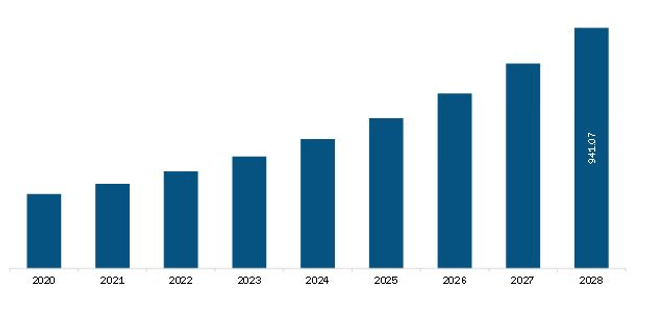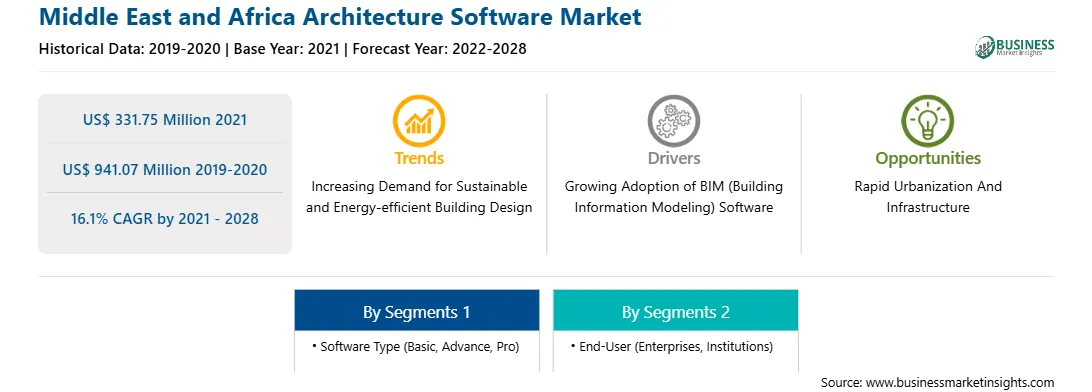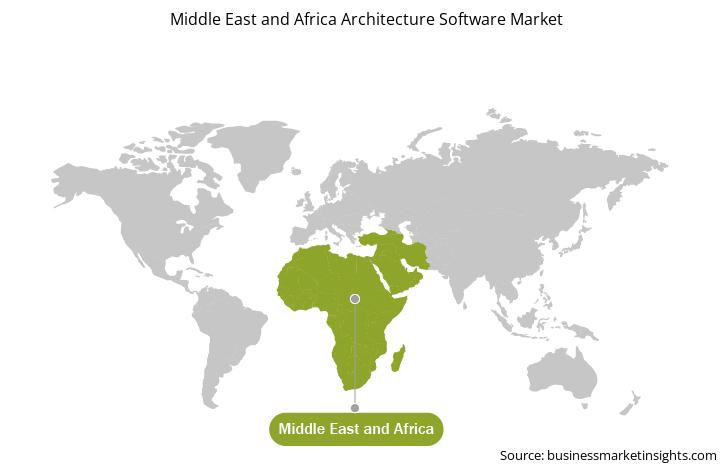Middle East and Africa Architecture Software Market
No. of Pages: 92 | Report Code: BMIRE00025003 | Category: Technology, Media and Telecommunications
No. of Pages: 92 | Report Code: BMIRE00025003 | Category: Technology, Media and Telecommunications
Architects may produce more realistic representations and visualizations using digitalized tools and applications. Customers may also contribute to the project by highlighting what they wish to keep, amend, or remove while seeing enhanced images, videos, or animations. Digitalization also promotes mutual communication and cooperation. Digitization has also gained traction due to its ability to reduce or eliminate the use of numerous sheets of paper for blueprints, drawings, and plans, making it an environmentally friendly approach to bringing the most complicated projects to life. Furthermore, digital tools provide easy access to the work, allowing customers, architects, and other project participants to view project data remotely. People don't have to rush to their workplaces and book business excursions to analyze plans and propose ideas, as everything is made available online. Flexibility in work, especially in accessing, storing, and transmitting data, is another benefit of using digital tools in architecture projects. Thus, the growing inclination toward digitalization in architecture is expected to provide significant opportunities for the future growth of the architecture software market.
With the new features and technologies, vendors can attract new customers and expand their footprints in emerging markets. This factor is likely to drive the architecture software market. The Middle East & Africa architecture software market is expected to grow at a good CAGR during the forecast period.

Strategic insights for the Middle East and Africa Architecture Software provides data-driven analysis of the industry landscape, including current trends, key players, and regional nuances. These insights offer actionable recommendations, enabling readers to differentiate themselves from competitors by identifying untapped segments or developing unique value propositions. Leveraging data analytics, these insights help industry players anticipate the market shifts, whether investors, manufacturers, or other stakeholders. A future-oriented perspective is essential, helping stakeholders anticipate market shifts and position themselves for long-term success in this dynamic region. Ultimately, effective strategic insights empower readers to make informed decisions that drive profitability and achieve their business objectives within the market.

| Report Attribute | Details |
|---|---|
| Market size in 2021 | US$ 331.75 Million |
| Market Size by 2028 | US$ 941.07 Million |
| Global CAGR (2021 - 2028) | 16.1% |
| Historical Data | 2019-2020 |
| Forecast period | 2022-2028 |
| Segments Covered |
By Software Type
|
| Regions and Countries Covered | Middle East and Africa
|
| Market leaders and key company profiles |
The geographic scope of the Middle East and Africa Architecture Software refers to the specific areas in which a business operates and competes. Understanding local distinctions, such as diverse consumer preferences (e.g., demand for specific plug types or battery backup durations), varying economic conditions, and regulatory environments, is crucial for tailoring strategies to specific markets. Businesses can expand their reach by identifying underserved areas or adapting their offerings to meet local demands. A clear market focus allows for more effective resource allocation, targeted marketing campaigns, and better positioning against local competitors, ultimately driving growth in those targeted areas.

Middle East & Africa Architecture Software Market Segmentation
The Middle East & Africa architecture software market is segmented into software and end user. Based on software, the market is segmented into basic, advance, and pro. Based on end user, the market is segmented into enterprises, institutions, and others. Geographically, the Middle East & Africa architecture software market is segmented into Saudi Arabia, the UAE, South Africa, and the Rest of MEA.
Middle East & Africa Architecture Software Market Companies
Autodesk Inc., Dassault Systems, ProgeSOFT, Cadsoft, ActCAD, and Trimble Inc. are among the leading companies in the Middle East & Africa architecture software market.
The Middle East and Africa Architecture Software Market is valued at US$ 331.75 Million in 2021, it is projected to reach US$ 941.07 Million by 2028.
As per our report Middle East and Africa Architecture Software Market, the market size is valued at US$ 331.75 Million in 2021, projecting it to reach US$ 941.07 Million by 2028. This translates to a CAGR of approximately 16.1% during the forecast period.
The Middle East and Africa Architecture Software Market report typically cover these key segments-
The historic period, base year, and forecast period can vary slightly depending on the specific market research report. However, for the Middle East and Africa Architecture Software Market report:
The Middle East and Africa Architecture Software Market is populated by several key players, each contributing to its growth and innovation. Some of the major players include:
The Middle East and Africa Architecture Software Market report is valuable for diverse stakeholders, including:
Essentially, anyone involved in or considering involvement in the Middle East and Africa Architecture Software Market value chain can benefit from the information contained in a comprehensive market report.